What’s Up?
The recent dearth of pelicans has not stopped Bob and me from making some great images every day. On Friday morning, we met recently retired San Diego PD Detective Sergeant Juan Gonzales early at La Jolla. Juan is looking to get into and improve as a bird photographer. He showed up with Nikon gear: a brand new Nikon NIKKOR Z 180-600mm f/5.6-6.3 VR Lens (Nikon Z) and a Nikon Z8 Mirrorless Camera. I quickly got him squared away on sun angle, getting the right exposure, wind direction, and flight photography. Like many beginning bird photographers with their first long lens, proper framing consistency was a problem. But — do not be shocked, he made some very good images. I will be sharing a few of them with you here soon. He did quite well considering his total lack of experience with bird photography.
Late in the morning I finally found a sweet breeding pelican teed up for Juan. He got a few frames of the bird but had to head back to his car for a third battery. Right after he left, the bird had a fight with a honeybee. A-1-ii Tracking: Zone nailed the eye in every frame of a wonderful sequence. I will share the best one or two here soon.
Bob and I headed back to La Jolla on Friday afternoon and worked the Brandt’s Cormorants as hundreds of tourists passed by; many stopped to chat about the amazing birds as close as three feet away on the breeding ledge below the sidewalk. We ended a great day with an early dinner at the Promiscuous Fork. I tried something brand new: I used only the 300mm f/2.8 with the a-1 ii. It was an eye-opening experience and the results merit a YouTube instructional video.
I finally got around to ordering my second a-1 ii body yesterday, this one from B&H as I had several Gift Cards to use. I got my first one from Steve Elkins at Bedfords.
On Saturday morning Bob and I headed to Coronado Beach — conditions were perfect with a gentle east breeze and clear skies. We worked several small flocks of relatively tame Marbled Godwits in the sweet early morning light. Next was an assortment of gulls and smaller shorebird species. For me, the rest of the day was NFL football. Go Patrick! Go Chiefs!
Today is Sunday 19 January 2025. We will be headed out somewhere early. Wherever you are and whatever you are doing, we hope that you too choose to have a wondrously happy day.
If an item — a Delkin flash card, or a tripod head — for example, that is available from B&H and/or Bedfords, is also available in the BAA Online Store, it would be great, and greatly appreciated, if you would opt to purchase from us. We will match any price. Please remember also to use my B&H affiliate links or to earn 3% cash back at Bedfords by using the BIRDSASART discount code at checkout for your major gear purchases. Doing either often earns you free guides and/or discounts. And always earns my great appreciation.
Sony a-1
BAA friend and brilliant bird in flight photographer Arash Hazeghi is offering a Sony a-1 in excellent plus condition for $3850.00. The best news is that Arash is leaving his personal birds in flight settings on this a-1. The camera has had an LCD protector screen in place since Day One so the LCD is pristine. There is a bit of paint loss on the EV (Thumb) dial and on the flash hot shoe, the latter from normal flash use. Photos of the camera are available upon request. The camera has been used with electronic shutter virtually 100% of the time; the mechanical shutter count should be very low if any. The sale includes all the original accessories (still wrapped), the original box and paperwork, one extra Sony OEM FZ100 battery, a RRS camera body baseplate (made in USA), a Watson dual charger with USB output, and fully insured FedEx shipping with tracking — direct signature will be required upon delivery — US addresses only.
Please contact Arash via e-mail.
I have used Sony a-1 bodies as my workhorse camera bodies for three years. They produce stunning 51MP files with vivid natural colors. The AF system is science-fiction-like. They are rugged and dependable and 30 frames per second is nothing to sneeze at. If you are looking to get into bird photography with Sony, a used a-1 is the way to go! With a brand new a-1 ii going for $6498.00, you can save a bundle by grabbing Arash’s body today. Right now, B&H is offering a used a-1 in like-new condition for $4,397.00. Do the math. artie
|
|
|
This image was created on 15 January on the 2025 San Diego IPT. Standing at full height above the breeding shelf, I used the hand held Sony FE 70-200mm f/2.8 GM OSS II lens (AT 200mm) and The Latest Greatest Sony Flagship Body, the a1 II Mirrorless Camera. ISO 2000. Exposure was poorly determined with ISO on the Thumb Wheel; 1/3200 sec. at f/2.8 (wide open) in Manual mode. RawDigger showed that the exposure was one full stop too dark (due to operator error). AWB at 8:11:29am in the shade on a sunny morning. Zone/AF-C with Bird Eye/Face Detection enabled performed perfectly. Image #1: Brandt’s Cormorant inbound with seaweed for the nest |
Incoming Flight
The standard flight lens for the Brandt’s Cormorants returning to their nests just below the sidewalk near the Bridge Club is a 70-200mm f/2.8. No teleconverter is necessary. Early mornings are best. Even with a super-fast mid-range telephoto lens, high ISOs are required. Even though you will be working in the shade early and late in the day, my great preference is for cloudy (rather than for clear) days. Folks with f/5.6 or f/6.3 lenses will need to use ridiculously high ISOs in order to obtain decent exposures with the required high shutter speeds.
Though I urged folks on the IPT to bring along a 70-200 2.8 lens even if they had to rent one, only Warren Robb had one along. Super-fast lenses are a huge plus when shooting the Brandt’s Cormorant nesting shelf in La Jolla.
|
|
|
This image was created on 16 January on the 2025 San Diego IPT. Leaning on the railing above the breeding shelf, I used the hand held Sony FE 300mm f/2.8 GM OSS Lens (Sony E) with the Sony FE 1.4x Teleconverter and the Latest Greatest Sony Flagship Body, the a1 II Mirrorless Camera. ISO 800. Exposure determined via Zebras with ISO on the Thumb Wheel; 1/250 sec. at f/4 (wide open) in Manual mode. RawDigger showed that the exposure was dead solid perfect: AWB at 8:29:06am in total shade on a sunny morning. Tracking: Zone/AF-C with Bird Eye/Face Detection enabled performed perfectly. Image #2: Brandt’s Cormorant breeding plumage male head portrait |
Easy-Peasy Head Shots
There are several spots along the railing where you can get very close to the cormorants, sometimes as close as two feet, much too close to focus. Anyhoo, there are lots of chances to create head portraits of the handsome males as well as the females and young birds from last year. Fast lenses are ideal but are not a vital as with the flight photography.
To get as low as possible and ensure a distant background without any distractions, I leaned over the railing and worked off a-1 ii’s the tilted rear screen. With my reading glasses on and the level activated.
|
|
Image #2A: unsharpened 100% crop of the Brandt’s Cormorant breeding plumage male head portrait |
Amazing Detail
The combination of an a-1 or an a-1 ii, the 1.4X TC, and the 300mm f/2.8 GM lens provides incredibly rich and sharp detail in competent hands, even at the wide open aperture.
Enlarge the photo by clicking on it and you can see me in the center of the bird’s pupil along with the railing. Just to our left, you can see the head of a second cormorant peeking above the horizon.
|
|
|
This image was also created on 16 January on the 2025 San Diego IPT. Leaning on the railing above the breeding shelf, I used the hand held Sony FE 300mm f/2.8 GM OSS Lens (Sony E) and The Latest Greatest Sony Flagship Body, the a1 II Mirrorless Camera. ISO 800. Exposure determined via Zebras with ISO on the Thumb Wheel; 1/500 sec. at f/2.8 (wide open) in Manual mode. RawDigger showed that the exposure was dead solid perfect: AWB at 9:18:40am in total shade on a sunny morning. Tracking Zone/AF-C with Bird Eye/Face Detection enabled performed perfectly. Image #3: Brandt’s Cormorant breeding plumage male displaying |
Hey Honey; Look at Me!
The male Brandt’s display all day and pretty much all season long. They are quite impressive as they tip their heads back, partially spread and vibrate their wings, and show off their turquoise blue gular pouches. Good photographs can be created with just about any focal length up to and including 1200mm.
|
|
|
This image was also created on 16 January on the 2025 San Diego IPT. Standing at full height above the breeding shelf, I used the hand held Sony FE 70-200mm f/2.8 GM OSS II lens (AT 145mm) and The Latest Greatest Sony Flagship Body, the a1 II Mirrorless Camera. ISO 160. Exposure determined via Zebras with ISO on the Thumb Wheel; 1/30 sec. at f/4 (stopped down one stop for no particular reason) in Manual mode. RawDigger showed that the exposure was dead solid perfect: AWB at 7:34:04am in total shade on a sunny morning. Zone/AF-C with Bird Eye/Face Detection enabled performed perfectly. Image #4: Brandt’s Cormorant landing at shelf |
The Early Morning No Light District
In the early mornings, the hills and homes of La Jolla block almost all light until an hour or more after sunrise. Not to mention that the prime nesting shelf is in the shade for most of the day. Thus, very early and very late are the prime times for creating pleasing blurs. Folks who hate blurs get to sit on their hands for an hour or two. Everyone in the IPT was open to at least trying.
You can get varying degrees of blurring by experimenting with different blur speeds. With Image #4, I love the two blurred nests that frame the incoming bird.
|
|
|
This image was also created on 16 January on the 2025 San Diego IPT. Leaning on the railing above the breeding shelf, I used the hand held Sony FE 70-200mm f/2.8 GM OSS II lens (AT 146mm) and The Latest Greatest Sony Flagship Body, the a1 II Mirrorless Camera. ISO 400. Exposure determined via Zebras with ISO on the Thumb Wheel; 1/250 sec. at f/2.8 (wide open) in Manual mode. RawDigger showed that the exposure was dead solid perfect: AWB at 7:34:04am in total shade on a sunny morning. Tracking Zone/AF-C with Bird Eye/Face Detection enabled performed perfectly. Image #5: Brandt’s Cormorant female on seaweed nest |
Should You Upgrade to or Purchase a Sony a-1 ii?
I will be purchasing my second a-1 ii today.
Aside from the improved ergonomics as compared to the a-1, other nice features include the fact that the rear screen tilts both ways. Pre-capture will surely prove to be a plus while in my option, the Speed Boost feature is a total waste for bird photography. In addition, the resolution on the rear monitor has been improved dramatically. Not to mention that Bird Face-Eye tracking on the a-1 ii is significantly better than on the a-1 and that the 51MP file are to die for. And don’t forget the Pre-Capture feature!
So, the big question is, is the a-1 ii “worth” a gear upgrade. Remembering that I can never know whether or not something is worth it to you, I can say that I was not floored when using my a-1 ii. The differences between the a-1 ii and the original a-1, are neither huge nor eye-opening. The huge difference between the new camera body and the a9 iii is, of course, the 51MP a-1 raw files (as compared to the 24MP files rendered by the a9 iii).
With the price of a new a-1 having recently dropped $1500.00 to $4,998.00, the decision for new Sony buyers is a very tough one. The a-1 ii sells new for $6,498.00. And the price of used a-1 bodies will continue to drop (but surely not as much as I had thought before using the a-1 ii).
If you do purchase an a-1 ii, be sure to use one of my two affiliate links so that you will receive my a-1 ii settings (in the form of a CAMSEa1ii.DAT file), the Buttons and Dials Guide, and an Info Sheet. Folks who do not purchase their new a-i using my B&H link or from Bedfords here and entering the BIRDSASART discount code at checkout will be able to purchase the a-1 ii guide for $227.43. If you are at all confused and do not want to screw up your order, please get in touch via e-mail.

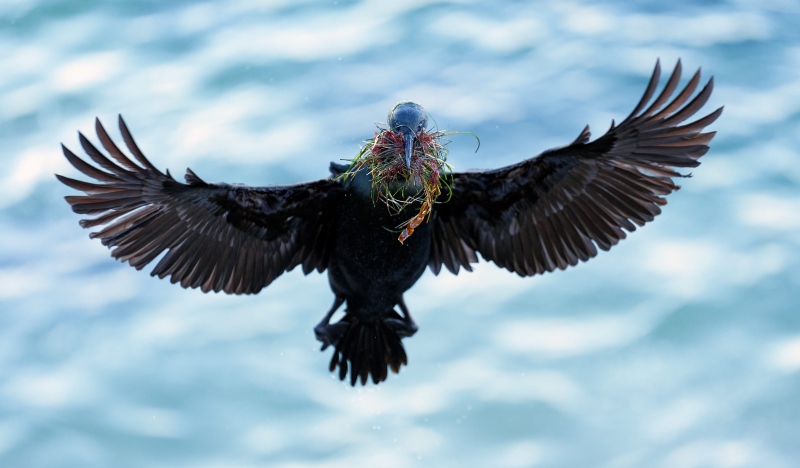
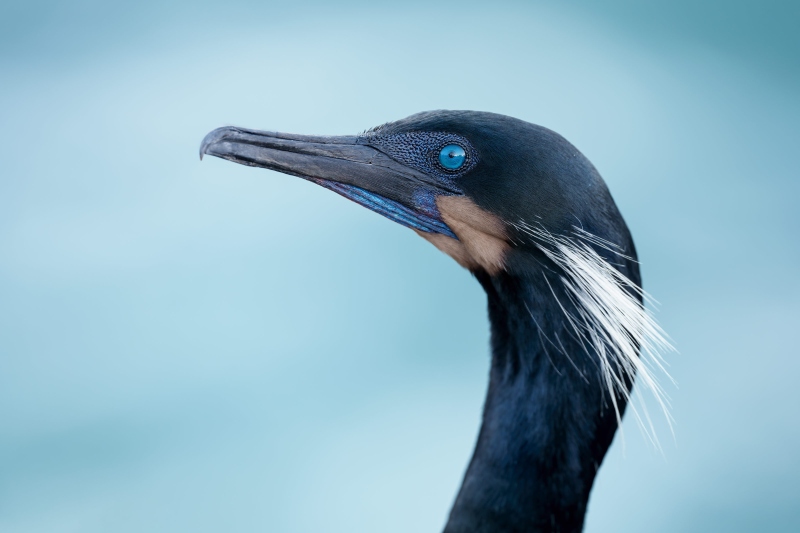
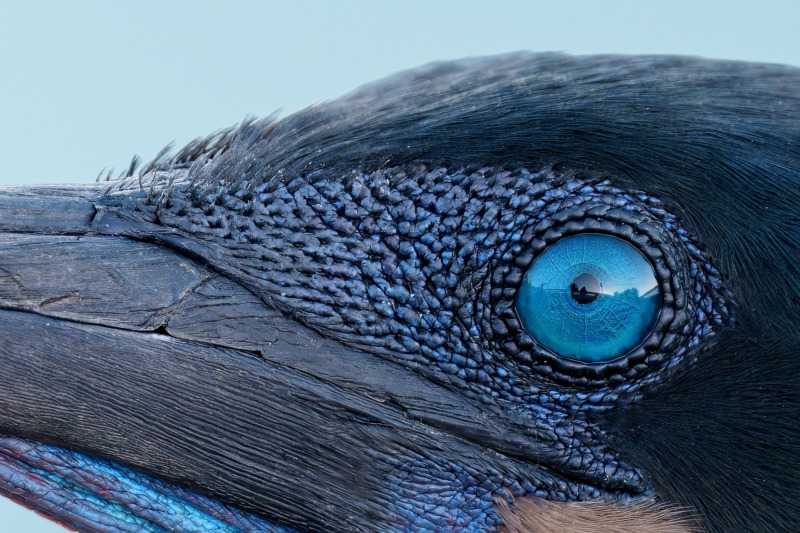
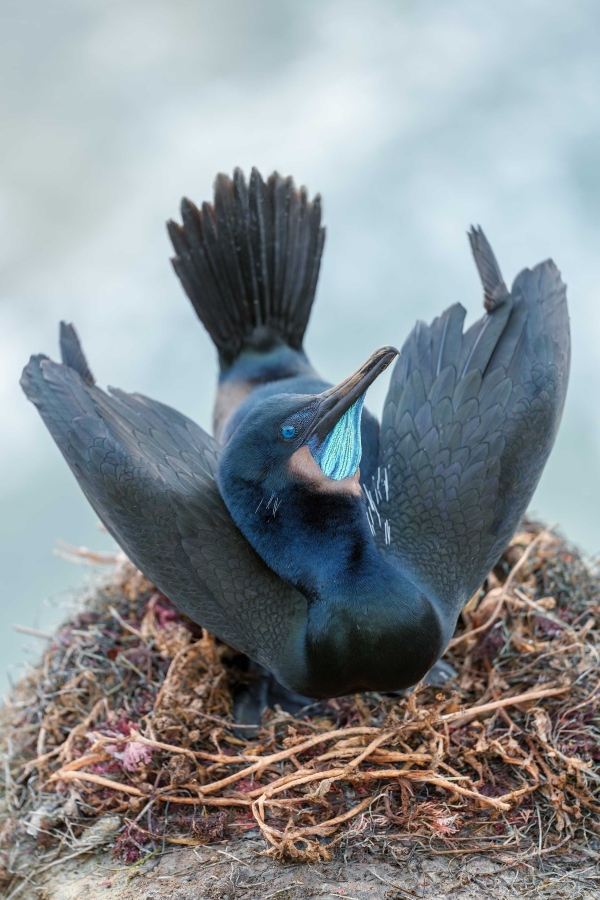
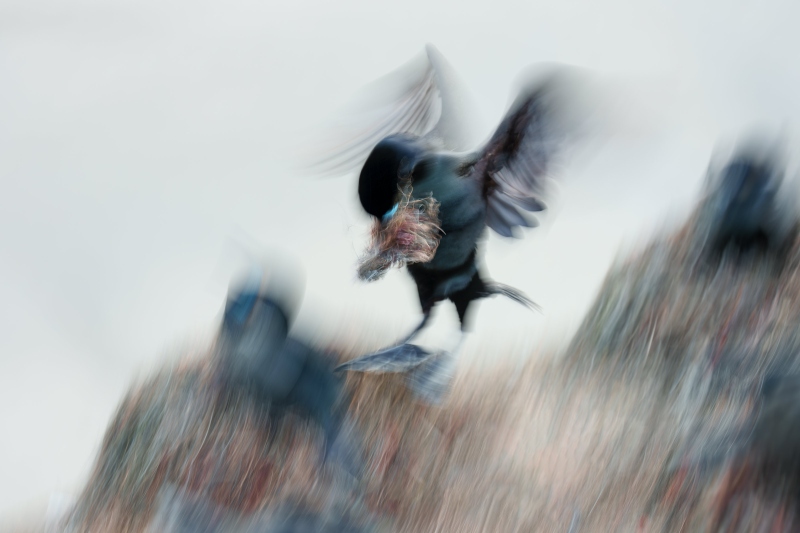
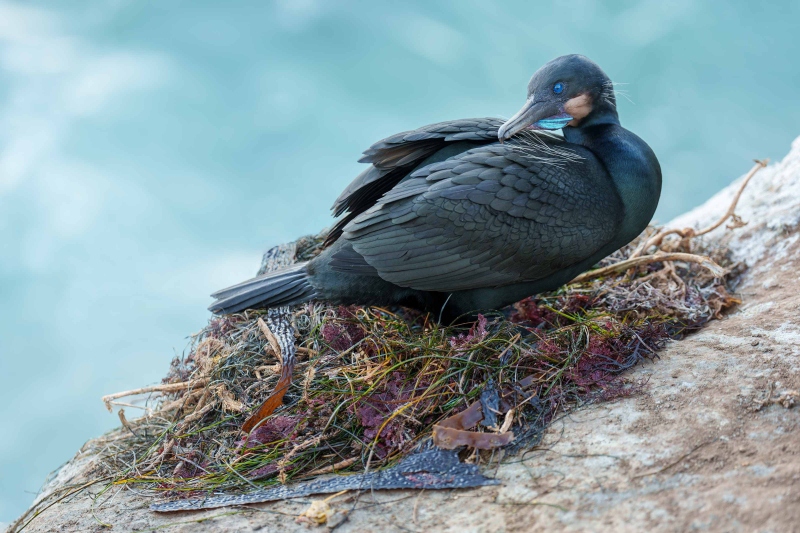









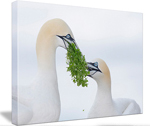



WOW! #3 is something else. Composition and color just fantastic
All great images! I love both the head shots best but #2 with the white plume is my favorite.
Art: My favorite was #5, the female Brandt’s cormorant nesting. I have never seen a “seaweed” nest before!
Thanks Pat +,
Most of the nests are seaweed. On pair keeps building a sick nest in the same spot day after day with dried branches from a nearby bush. The nest keeps disappearing. Amazingly, that one is my favorite too!
with love, artie
Thanks for fixing the blog link for us unfortunate aol mail users. #2 and #2a take it for me. That eye and eye color is so unique. Thanks.
My pleasure.
a
Artie, to me the second image is amazing. Thanks for sharing!
Franks, Thank!
a
The head portrait is so gorgeous with all those blues.
Thanks, Dan. Sitting ducks…
with love, a
I would also like to add that for me observing and photographing these amazing birds was great fun and a personally rewarding experience. Your expert guidance on first “seeing the shot” and the mechanics of capturing a properly exposed image with the right gear was invaluable. Thank you Artie for another great IPT.
Thanks, Warren. The pleasure was all mine. The group was a complete delight.
Much love, a
Typo: Easy-Peasy Head Shots
There are several spots along the railing where you can get very close to the cormorants, sometimes as close as two feet, much to close to focus.
Should be too close
Thanks, Paul. You are too correct 🙂
a